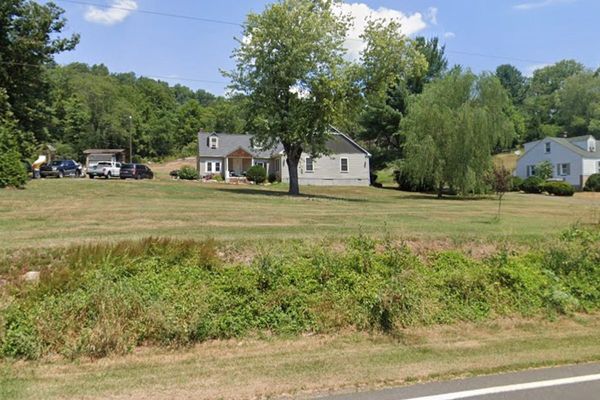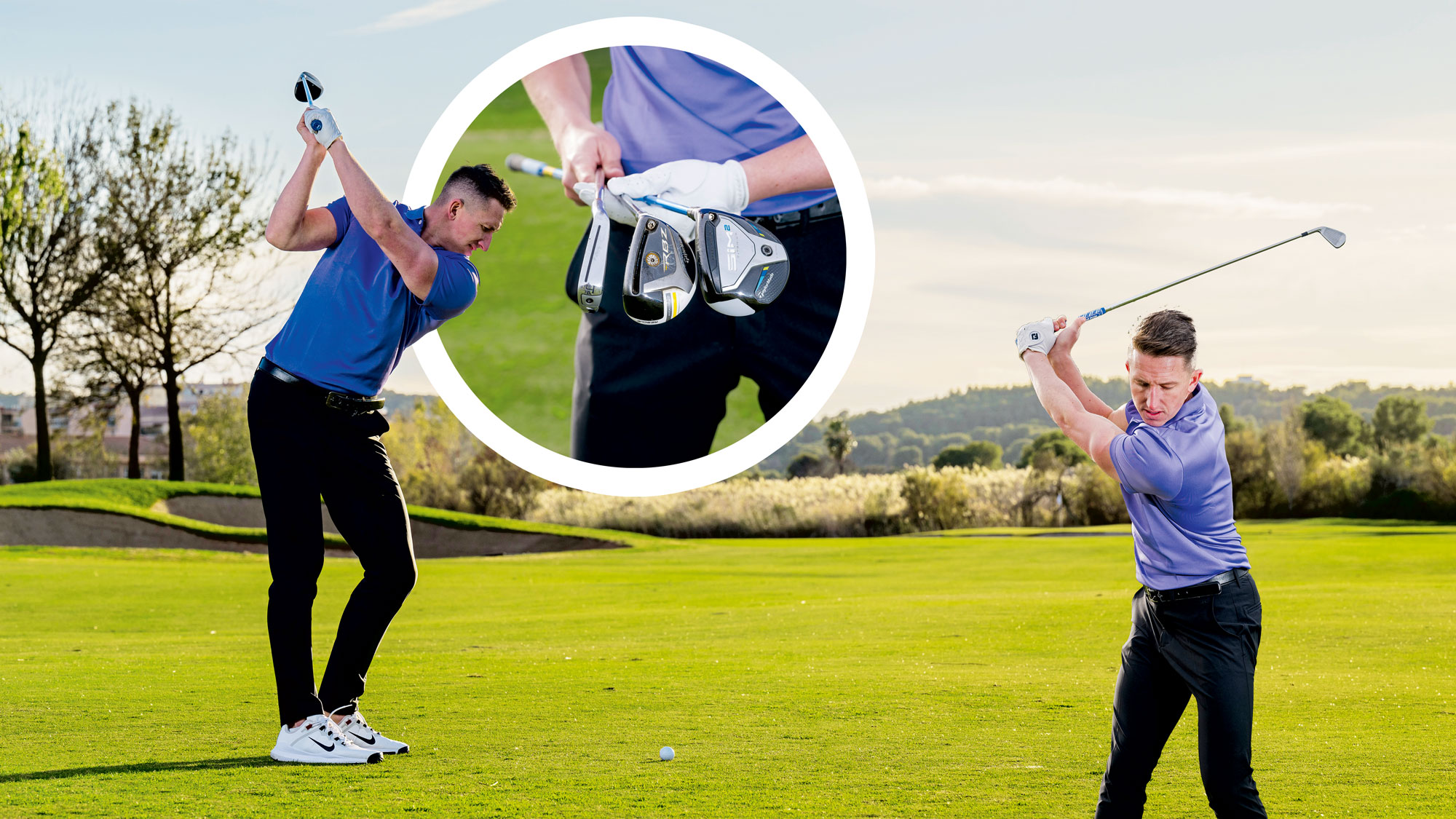
Plenty of amateur golfers have clubs in their bag which they rarely go to, even if the scenario dictates that it's the right play. When finding themselves way back in the fairway, they would usually opt for a lay-up shot but we want to help you to become more confident in going for the green and setting up scoring opportunities.
If you have struggled to hit long-irons, hybrids and fairway woods in the past, invest some time practicing with these clubs as just a couple of basic set-up and technique alterations could transform your game.
There are really three main keys. An effective set-up and ball position, combined with efficient speed will mean the correct launch angle for your distance requirements, then finally, you need a clean strike.
Golfers often complain that all their long-irons fly the same distance, but that’s usually down to poor strikes. In this article, Golf Monthly Top 50 Coach Gary Munro highlights some top tips, practice drills and quick fixes to get your long-irons, hybrids and fairway woods working well every time...
How To Hit A Long-Iron: Step-By-Step Guide
1. Downward Attack Angle
Understanding how to hit a long-iron shot can be very helpful when playing into lengthy par 4s or even for laying up on par 5s, but these are intimidating clubs to hit as you have a lot of ground to cover and not much loft when you look down.
To hit your longest irons successfully, you must start by understanding that you still need a downward attack angle, striking ball then turf, to get the ball up in the air.
It can be daunting looking down at a club with little loft, but if you understand that hitting down will give you more compression and uplift on the ball, this, in turn, will lead to decent ball speed and distance.
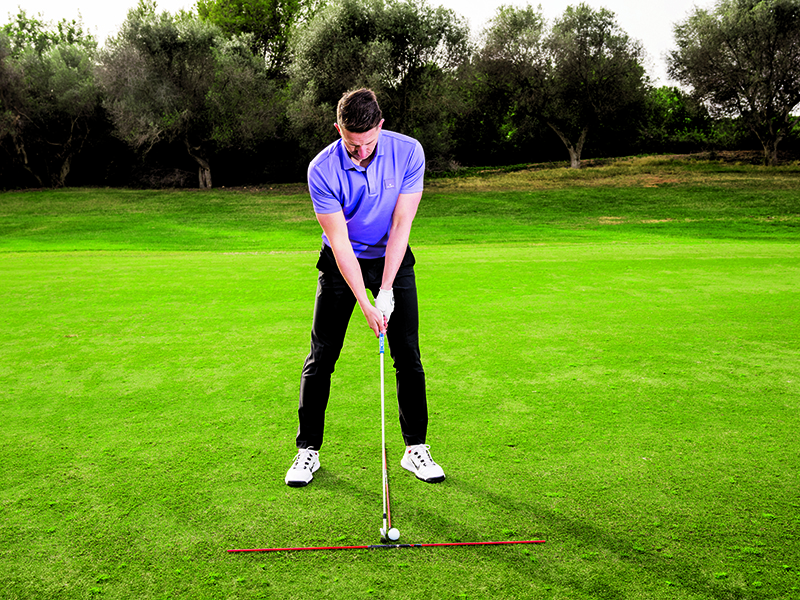
2. Get It Right At Set-Up
Place two sticks (or clubs) on the ground for alignment, one as your target line and one at 90˚ to it forming a T-shape. For a long-iron, position the ball two ball widths inside your left heel.
Start with your feet together, take a big step with your right foot and a little step with your left foot, also turning the toes out slightly. Place two golf balls into the gap between the left foot and stick as a check. You should feel like your base is wider for a long-iron than a mid- or short-iron as you need more stability to create speed.
The weight distribution in your feet at set-up should favour the lead side just a fraction, so around 55%. A simple check for your posture and correct arm hang is that you should be able to let go of the club with your right hand and wave it underneath your left hand without hitting your body.
3. Ball Position Is Key
Having the ball too far back in the stance will lead to an early strike. You won’t create enough height for the ball to reach the ideal apex of its flight, so it travels the same distance as a mid-iron.
With the ball too far back, the instinctive tendency is to tilt the shoulders away from the target, lean back and add loft to the club to compensate. This results in a worse strike, so the ball won’t go as far and you won’t get the most out of the long-iron.
Key Focus Areas With Each Club
Hybrids
The set-up for a hybrid is largely the same as for a long-iron, so you can follow almost the same procedure as outlined above. The only difference, however, is that the ball should be positioned just one ball’s width back from the inside of your left heel, opposite your left armpit.
This is purely because there is less loft on the clubface so you need the angle of attack to be more shallow, level with the turf and less descending. Your angle of attack can be as little as 1˚ downwards or level at the point of impact, to get a good shot trajectory and distance.
Fairway Woods
The fairway wood has the largest head of all three of your long fairway club choices and, when struck correctly, it gives you the best chance of maximum distance. Like the hybrid, the fairway wood’s larger footprint and shallower head design require a more sweeping, rather than downward, blow on the ball.
That said, the angle of attack should still be either 1˚degree negative (downward), or at worst neutral, level with the ball. It’s the same concept, with ball position more forward in the stance with a 3-wood than with a long-iron to make the angle of attack closer to 0˚. To ensure this sweeping attack, the ball should again be positioned one ball’s width back from the inside of the left heel.
Get these key steps right, and you'll be flushing your fairway woods in no time.

Really 'Turn' Up The Power
Along with your wider stance at set-up for stability, you’ll need a big shoulder turn to achieve more clubhead speed with all three types of club. Try to create a full backswing by getting your lead arm parallel to the ground and then complete the shoulder turn for great leverage and power.
Speed doesn’t necessarily mean a fast takeaway. In fact, I want you to focus on a nice build-up of gradual speed during the backswing by creating that big turn, which allows time for a smoother tempo. The more speed you have, the more spin you can create, thus generating more shot height and overall carry distance.
Ball Striking Drill
For a long-iron, place a tee peg two balls’ widths ahead of the ball. As the club travels down, it should strike the ball first at the end of its descent and continue on, collecting the tee peg beyond and taking it with it on the journey. You won’t be able to take the tee unless you strike down on the ball.
Repeat the drill for a hybrid or fairway wood, simply changing the position of the tee. Now, as ball position is only one ball’s width inside your left heel, place the tee peg one ball width ahead. The same principle applies. Hit the ball and then let the club sweep the ground with the wood to collect the tee on the way through.
Remember, collecting the tee means that the correct strike has come before.
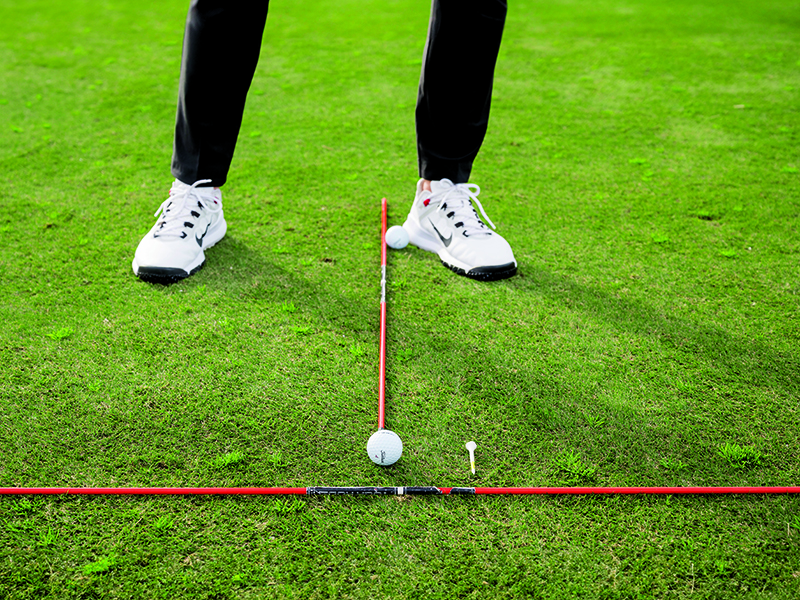
Simple Fixes For Common Faults
Swing Plane Check
Setting the wrists and loading the club halfway back with a good shoulder turn gives you time and space to create speed. A good checkpoint when the club is halfway back is for the grip to be pointing directly between the toe line and golf ball. This shows the club is on the correct plane.
Club Selection
If you struggle to build enough speed in your swing, I’d advise switching long-irons for hybrids and using more fairway woods so the ball can launch at the right angle for the height, carry and distance required.
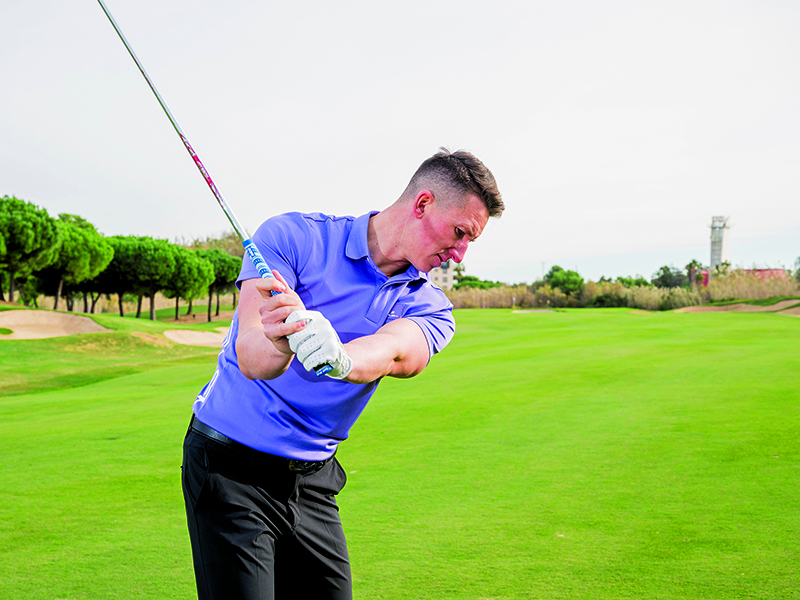
Ball Position
If you don’t have a set-up routine or you don’t understand where the ball should be positioned, it will lead to problems. Putting the ball too far back in your stance with a long-iron means that it will fly too low and only carry the same distance as a 6-iron.
To fix this, use the alignment sticks in practice to ensure that your ball position is correct at set-up. By following the routine of building your stance from a starting point with your feet together you can’t go wrong.
Poor Strikes
These can often be caused by a short and aggressive swing because the golfer feels that they need to swing so much faster to advance the ball a long distance. To fix this, focus on using a smooth tempo to wind up with a big backswing turn.
Want To Add A New Hybrid, Fairway Wood Or Set Of Irons To The Bag?
Ready to make the change and shoot lower scores? Do it with the best equipment on the market and give yourself the greatest chance of success.
Check out our fantastic Black Friday deals!
FAQs
What Is The Easiest Fairway Wood To Hit?
The number of each fairway wood relates to the loft on the club, and while certain lofts might be 'easier' for some golfers to hit well more consistently, it all comes down to personal preference. Be sure to try out as many as you can to find the one that suits you best.
These versatile clubs are designed to be effective for golfers of all abilities, but check out our expert guide if you are unsure about which are the most forgiving fairway woods on the market.
Are Hybrids Better Than Long Irons?
Hybrids are generally considered to be easier to hit than their iron counterparts, but ultimately it depends on the preference of the individual golfer. The latest data suggests that longer irons (2-irons and 3-irons) are becoming somewhat less popular than the hybrid options.

